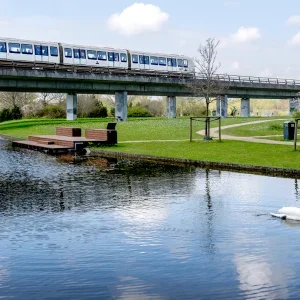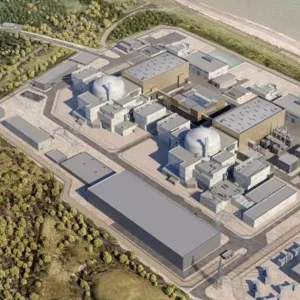MGKT has increased the frequency of readings from once a week to every four hours and installed with building settlement markers and tilt meters.
The frequency of readings will be maintained until the tunnel excavation in the area is completed and MGKT’s Emergency Response Team will be on standby.
MRT Corp. strategic communications and public relations director Amir Mahmood Razak said the monitoring of the buildings adjacent to the location of the incident has shown that they are safe.
"Readings of building settlement markers and tilt meters installed in these buildings so far have shown that the buildings have not experienced movement and are safe.
"In any case, the risk of building collapse is negligible as buildings have deep piles that go way beyond the depth of the MRT tunnel," he said.
Amir also said the TBM was carrying out tunnel excavation work near the location where the sinkhole appeared.
The TBM has excavated past the area in front of Bangunan LTAT and is now excavating the tunnel towards Pavilion KL beneath Jalan Bukit Bintang. The TBM is now 27m away from the sinkhole.
About 60cu.m of cement mortar was used to fill the sinkhole.
Sinkhole formation, he added, is a known risk when tunnelling through the Kuala Lumpur Limestone Formation, where the Bukit Bintang area is located.
As the risks are known, MGKT had taken steps to mitigate the situation.
The Variable Density TBMs which were specially designed to handle tunnelling under such circumstances have proven to be able to mitigate the effects of tunnelling in such geological formations.
Amir said there had not been any major incidents since tunnelling began in May last year.
"Investigations into the sinkhole are being carried out by MRT Corp and MGKT to determine whether there were any extraordinary circumstances — be it geological or in the operation of the TBM — which may have caused the sinkholes.
"The area is the beginning of the transition zone between the Kuala Lumpur Limestone Formation and the more consistent Kenny Hill Formation which lies beneath the western part of Kuala Lumpur and where tunnelling is particularly challenging," he said.
As the formation is karstic, where the bedrock level is irregular as it is interspersed by rock heads and deep cavities covered by top soil, there can also be underground caverns beneath it which may be filled with water, soil or air.
Such features, said Amir, are challenging for tunnel excavation as the irregular geological formation may cause the TBM to lose pressure when excavating from hard rock directly into soft soil.
As a result, the soil above the TBM will collapse and sinkholes are formed on the land surface.
MRT Corp. and MGKT are taking steps to minimise the risk of sinkhole formation, and these include using specially designed Variable Density TBMs, and stringent soil investigation along the TBM path to find underground cavities and voids.
It also involves filling up cavities and voids identified in soil investigations to enable the TBM to excavate through with minimal chance of a sudden change in pressure.
Surface monitoring teams are also deployed to monitor closely the surface directly above the TBM to enable immediate action should ground movement be detected.
Amir said the closest MRT stations to the area are Pasar Rakyat — located in the future Tun Razak Exchange development site, which is 500m away from the sinkhole; and Bukit Bintang station — situated in front of Bukit Bintang Plaza, about 700m away from the site of the incident.







